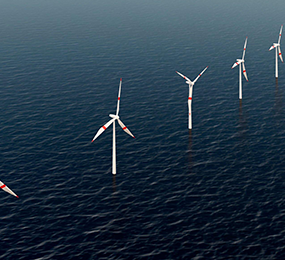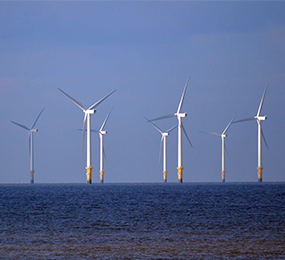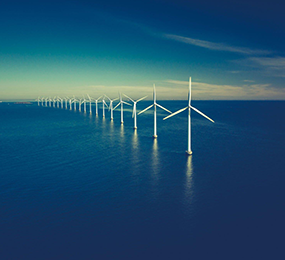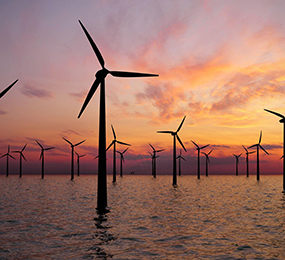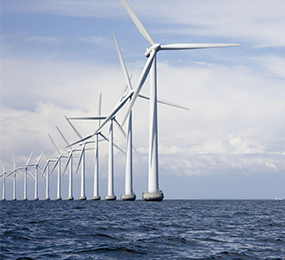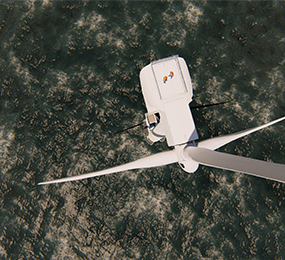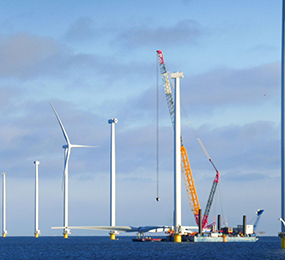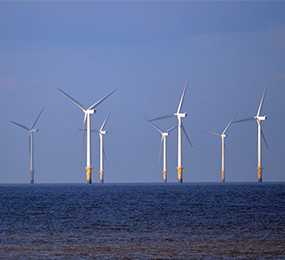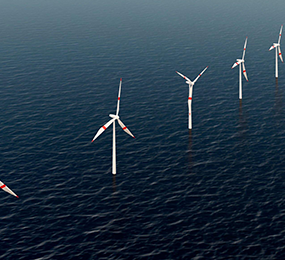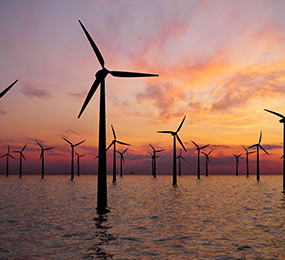Floating Offshore Wind and the Fishing Industry
Collaboration with fishing industries
When the ocean is a source of revenue or a recreational fishing spot, the presence of an offshore wind farm might be reason for anxiety.
Understanding the cultural and economic significance of fishing areas is critical. Working collaboratively with commercial and recreational fishing communities is critical throughout the development, construction, and operation of offshore wind farms.
Navigational safety
The wind turbines in an offshore wind farm are widely dispersed, which may not be noticeable from a distance. The wind turbines are illuminated and labelled in compliance with applicable legislation and local instructions, and their location is appropriately depicted on nautical charts.
Biodiversity preservation
Fish and other marine species that dwell in and around wind farms – and on which fisherman rely for a living – can coexist with offshore wind farms, owing in part to the experience of various team of environmental professionals.
Carefully minimize environmental impacts during construction, for example, by employing bubble curtains, noise mitigation screens, hydro sound dampers, and suction bucket jackets to reduce noise. Once developed, turbine foundations serve as artificial reef habitats for new and varied species.
Actively monitor and minimize any potential impacts on the fishing environment, particularly on economically significant species and ecosystems, throughout the life of a wind farm. This has included pioneering study into crustacean stocks on one of wind farms. Offshore wind operations had no harmful influence, according to this study.
Offshore wind farm conflicts with commercial fishing
1. Inadvertent damage, including to subsea cables. Accidental damage and ship collisions are big concerns. Snagging fishing gear can also cause a vessel to flip over or capsize, posing a major risk to fishermen.
2. Species extinction. Offshore wind farm construction and operation can disrupt mobile and sessile species, resulting in displacement or decrease of fish and shellfish supplies.
3. The environmental repercussions of geographical exclusion. Even if it is voluntary in terms of risk aversion, spatial exclusion might result in reduced or lost access to traditional fishing areas. This, in turn, causes activity to shift to other (perhaps less profitable and/or less dependable) fishing locations, increasing fishing pressure there.
4. Economic ramifications of geographical isolation. Improving navigation routes to and from fishing sites can result in longer steaming times. Small-scale fisheries may be unable to compensate for rising operating costs, and certain fishing areas may become inaccessible to small boats entirely. However, there are greater initial expenses for developers if they must agree on coexistence with the fisheries as a condition of gaining their license.
5. Socio-cultural problems. Conflicts between offshore wind farms and fishing can sometimes mask a deeper conflict. Offshore wind farms may be perceived by fishermen as the latest in a long line of limitations, endangering not just livelihoods but also a traditional way of life.
Solutions (mitigation and adaptation)
1. Carefully choose acceptable offshore wind farm locations.
It seems sense to conduct a comprehensive area selection approach to minimize problems between offshore wind farms and fisheries. This might include preliminary scoping activities and then narrowing down location alternatives in conjunction with stakeholders. Scenario mapping might also be used to teach communities about the consequences of project building, operation, and maintenance operations, as well as to examine the socioeconomic and environmental repercussions of a planned development. Careful selection methods may make decisions more transparent, and stakeholders can be included from the start, improving relationships between sectors.
2. Allow fishing boats to pass across offshore wind turbines.
Allowing vessels to pass across offshore wind farms can help fishermen get access to valuable fishing areas. Another option is to create safe passageways between offshore wind farms or turbines to allow fishing vessels to pass even in bad weather. Furthermore, the plan includes some safety passage(s) for larger ships, which can also be used by fishermen during bad weather.
3. Construction phases should be coordinated with fishing seasons.
Temporary closures of the OWF during specific seasons for specific types of fisheries might be an option to guarantee that safety criteria are satisfied while minimizing impacts on fisheries. Such closures can be timed to correspond with OWF building projects as well as fishing seasons. However, strong coordination and interchange (e.g., what are the best fishing seasons, when is it easiest to have building work done, when is significant O&M to take place) between the two sectors is essential for such ventures.
4. Encourage cross-sector collaboration agreements.
Extensive interaction and positive conversations between the two sectors can result in cooperation arrangements that capitalize on synergies (e.g. fishing boats used for monitoring during the construction and operation of the OWF). Other instances include determining trade-offs, mitigation, or compensating strategies. A memorandum of agreement has been struck in France between the Departmental Fisheries Committee and the developer, which will result in different benefits for the fishing community.
5. Consider technological alternatives.
On a more technical level, for a specific project, OWF developers can contribute to lowering the risk of conflict by:
1. careful siting of offshore wind farm (layout);
2. careful timing of construction work;
3. configuration of turbines to allow navigation and fishing in between;
4. adequate cable burial;
5. bunching of cables in corridors;
6. appropriate marking and lighting of developments;
Join us as we bring together experts, practitioners, stakeholders, and leaders from Europe and across the world to debate ways to reduce costs, explore supply chain opportunities, and analyze the role of innovation and progress in infrastructure.
In addition, numerous sessions will present and debate various elements of floating wind, ranging from market trends to financing options, technical obstacles, regulations and legislative initiatives, and best practices.
Visit our website to know more: https://bit.ly/3WI81v2
For more information and group participation, contact us: [email protected]
Leadvent Group - Industry Leading Events for Business Leaders!
www.leadventgrp.com| [email protected]


